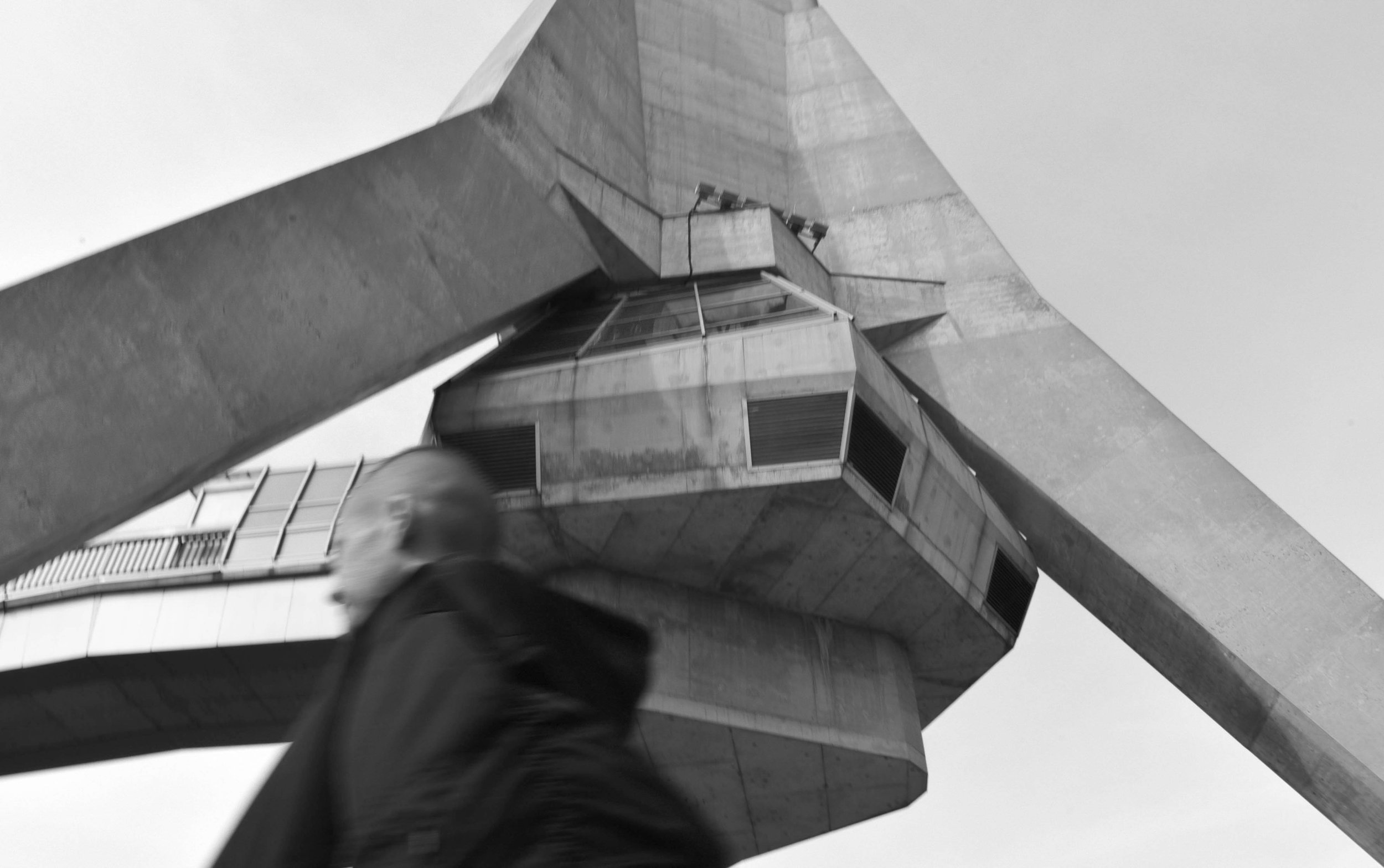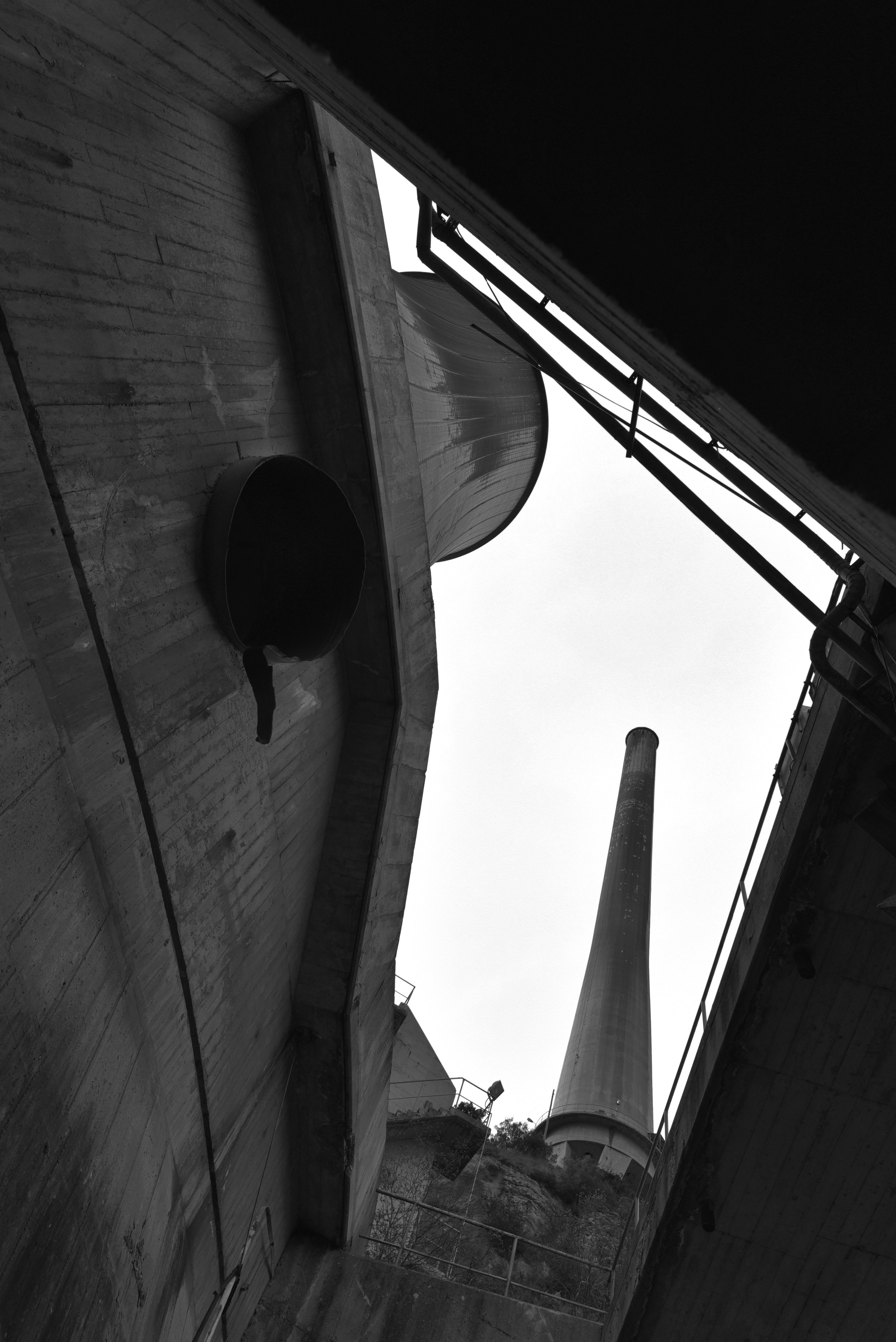
neo.brutalism
Ellen De’s photographs do not represent urban nor industrial landscapes, but rather a social state of mind.
The artist carries out an act of abstraction of architectural elements and compares them to sculptural pieces. The object of representation is brutalist architecture, iconic and recognisable as a symbol of the utopian thinking that generated it.
But with her way of creating images she transforms symbols into isolated forms in space. Form gains prominence over meaning. Contrast between straight and curved lines is emphasized over the final overall image, without the outlines of the buildings appearing in their entirety. The play of light and shadow and chiaroscuro tonalities enhance the volumetric or formal qualities over the utilitarian ones. The serial composition, the mechanical rhythm, as well as the unexpected points of view create a sense of alienation, perhaps even a kind of oniric distortion, at the tipping point between dream and nightmare.
at the tipping point between dream and nightmare.




contemporary degradation
By doing this, Ellen De moves away from the landscape. She strips away the context and isolates architecture from its historical and geographical framework, thus eliminating the narrative that justifies and explains it. The historic reading of constructions disappears, all that’s left is its contemporary degradation. Any associated ideologies vanish. What remains is the confirmation that the programmes of integrity and hopeful honesty that sparked them have become rubble. Spectres of a past which contained ideals for the future.
Dystopias are cultural instruments that offer us the chance to reflect about how we live and how we don’t want to live. They magnify the negative aspects of our reality and the fears they incite in us. Ellen De’s images offer an analysis of the present and the result is a dystopian interpretation: the alienation of contemporary life, the city as a grey surveillance device or the work environment in late capitalism as an example of the decaying of all revolutionary ideologies.
Spectres of a past which contained ideals for the future.
the decaying of all revolutionary ideologies.







